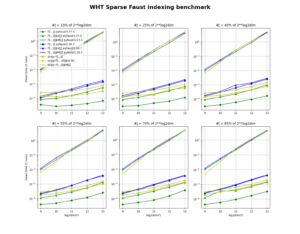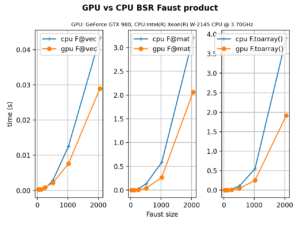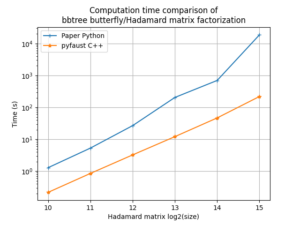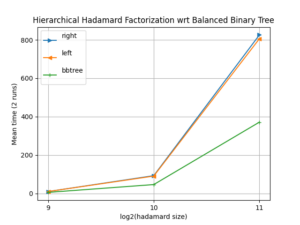The Faust slicing on GPU has been optimized. The following benchmark compares some computation times of Faut slicings using pyfaust-3.27 and pyfaust-3.29 on GPU.
The method to optimize the slicing is similar to the one implemented on CPU before (see the related news).
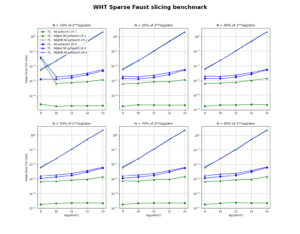
The GPU used to produce this figure was a NVIDIA GTX 980. The scripts to reproduce are available here.






